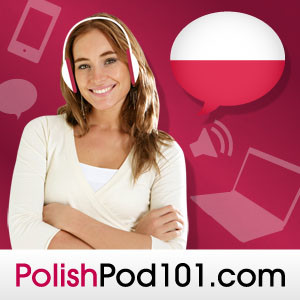
PolishPod101.com | Sample Premium Feed
Education:Language Courses
More Episodes
Culture Class: Essential Polish Vocabulary #1 - National Holidays - Audio
 2012-07-02
2012-07-02
Culture Class: Essential Polish Vocabulary #1 - National Holidays - Review
 2012-07-02
2012-07-02
Pronunciation #1 - So Many Polish Consonants, So Few Polish Vowels - Audio
 2012-05-21
2012-05-21
Basic Bootcamp #1 - Self Introduction: Basic Greetings in Polish - Audio
 2012-04-16
2012-04-16
Basic Bootcamp #1 - Self Introduction: Basic Greetings in Polish - Review
 2012-04-16
2012-04-16
Basic Bootcamp #1 - Self Introduction: Basic Greetings in Polish - Dialog
 2012-04-16
2012-04-16
Advanced Audio Blog S2 #1 - The Polish Region of Silesia - Audio
 2012-01-03
2012-01-03
Advanced Audio Blog S2 #1 - The Polish Region of Silesia - Review
 2012-01-03
2012-01-03
All About #1 - Top 5 Reasons to Study Polish! - Audio
 2012-01-02
2012-01-02
Survival Phrases #1 - Thank You! - Audio
 2011-10-13
2011-10-13
Survival Phrases #1 - Thank You! - Review
 2011-10-13
2011-10-13
Advanced Audio Blog #1 - Seriously, Let's Visit the Polish Bathrooms! - Audio
 2010-06-09
2010-06-09
Advanced Audio Blog #1 - Seriously, Let's Visit the Polish Bathrooms! - Review
 2010-06-09
2010-06-09
Advanced Audio Blog #1 - Seriously, Let's Visit the Polish Bathrooms! - Dialog
 2010-06-09
2010-06-09
Create your
podcast in
minutes
- Full-featured podcast site
- Unlimited storage and bandwidth
- Comprehensive podcast stats
- Distribute to Apple Podcasts, Spotify, and more
- Make money with your podcast
It is Free
You may also like

Learn English | EnglishClass101.com


Learn Spanish | SpanishPod101.com


Learn German | GermanPod101.com


Learn Japanese | JapanesePod101.com (Audio)


Learn French | FrenchPod101.com


- Privacy Policy
- Cookie Policy
- Terms of Use
- Consent Preferences
- Copyright © 2015-2024 Podbean.com


 iOS
iOS Android
Android